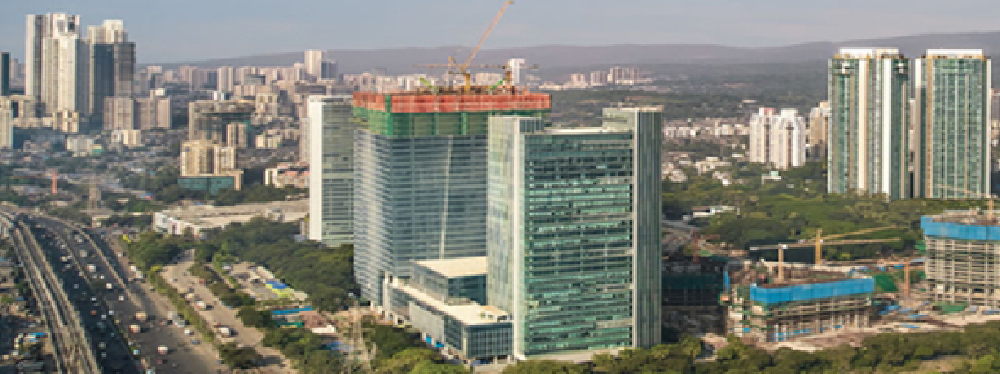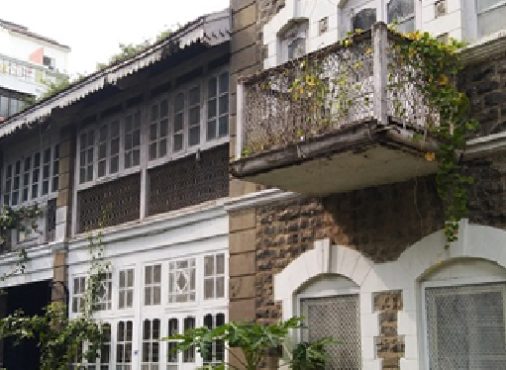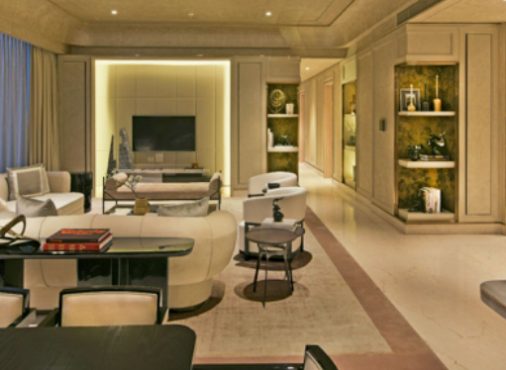Mumbai and Delhi-NCR are the two regions that are most talked about as India’s luxury real estate market expands. While both cities provide posh locales and upscale properties, the difference in luxury lifestyle transcends the many similarities.
This comprehensive guide is designed for discerning buyers and investors, comparing key factors like lifestyle, developer reputation, climate, and resale value trends to highlight what sets these regions apart.
Developer Trust & Construction Quality
In a structured luxury real estate market, the reputation and previous performance of the developer are the most important factors. When purchasing high to ultra-luxury properties, clients expect world-class design and amenities but also demand unwavering legal transparency, reliability, and competitive market risk primitives.
This section analyses the compliance record of premium developers in Mumbai and Delhi-NCR.
Mumbai: Timely Delivery and RERA Compliance
Mumbai’s top developers, such as Rustomjee have gained a reputation for consistency in timely project delivery. This is attributed to stringent RERA compliance, meticulous project planning, and a buyer-first approach.
Developers here often provide real-time progress tracking, adhere closely to promised possession dates, and maintain open lines of communication with homebuyers.
Mumbai’s saturated land availability and regulatory oversight have also led to more vertical, well-managed developments in core areas like Bandra, Pali Hill, and Lower Parel, where project execution is streamlined and monitored closely by urban planning bodies.
Delhi-NCR: Brand Credibility vs Delay Challenges
In contrast, Delhi-NCR has faced challenges with construction delays, stalled projects, and inconsistencies in regulatory compliance, particularly in the Noida and Greater Noida regions. While reputed developers do offer credibility, the broader luxury landscape is affected by legacy issues involving builder defaults and buyer litigation.
RERA has improved transparency in the NCR market, but trust issues still persist—particularly with smaller developers or large-scale projects where land acquisition and approvals often cause delays. As a result, buyers need to exercise greater due diligence in NCR compared to Mumbai.
Read Also: Emerging Trends in Luxury Real Estate for NRIs: The Shift to Branded Residences
Lifestyle Infrastructure & Ecosystem
Luxury living extends beyond the home. Mumbai and NCR offer distinct lifestyle ecosystems, each catering to different priorities.
Mumbai: Urban Convenience Meets High-End Culture
- Premium locations like Bandra, Worli, and Pali Hill offer walkability, sea views, and proximity to high-street retail, cafes, and fine dining.
- Mixed-use communities seamlessly integrate residential spaces with commercial hubs and recreational areas, all within a walkable or easily accessible radius.
For example, Bandra Kurla Complex (BKC) in Mumbai blends upscale residences with office spaces, retail, and dining zones.
- Residents enjoy easy access to cultural hubs, galleries, and performance spaces.
Take South Mumbai’s Kala Ghoda district, known for its art galleries, museums, and cultural festivals, all within a compact area.
- Mumbai offers easy access to schools, hospitals, and business districts via public and private transport.
For instance, the suburb of Andheri connects residents to reputed schools like Bombay Cambridge International School, top hospitals like Kokilaben Dhirubhai Ambani Hospital, and major employment hubs through the metro and road networks.
- There are well-established neighbourhoods with community charm and exclusivity.
Delhi-NCR: Space, Privacy, and Club-Style Living
- Offers larger land parcels with expansive villa-style and low-rise gated communities.
- High-end developments often include golf courses, private clubs, landscaped gardens, and sports facilities.
- Locations like South Delhi, Golf Course Road, and Noida Sector 150 offer green buffers and privacy, ideal for families seeking space.
- However, lifestyle offerings like entertainment zones and fine dining are often car-dependent and located at a distance.
Read Also: How NRIs Can Benefit from REIT Investments in Indian Real Estate
Luxury Buyer Preferences & Trends
The preferences of today’s luxury homebuyers have evolved well beyond just aesthetics or location. Discerning buyers, especially NRIs, HNIs, and second-home investors, are now driven by a mix of prestige, liquidity, exclusivity, and future-proof investment value.
Mumbai: A Global Symbol of Prestige
- Owning property in Mumbai, especially in sought-after neighbourhoods like Bandra West, Pali Hill, and Worli, is viewed as a status symbol both locally and globally.
- Sea-facing homes are particularly coveted due to their limited availability, contributing to rising demand and long-term value appreciation.
In Mumbai’s Worli Sea Face, property prices have surged by approximately 55.84% year-on-year, with average rates reaching ₹73,475 per sq ft as of early 2025.
- Mumbai attracts non-resident Indians (NRIs) and foreign investors for its strong liquidity, cosmopolitan culture, and year-round rental market.
- The city’s position as India’s financial capital, along with its proximity to business and entertainment hubs, adds significant prestige to property ownership.
Delhi-NCR: Value-Oriented But Oversupplied
- Delhi-NCR offers larger, more spacious homes at a relatively lower cost, appealing to buyers focused on land size and privacy.
For ₹8.7 crore (~$1 million), buyers could acquire approximately 2,238 sq ft in Delhi, compared to about 1,065 sq ft in Mumbai.
- However, the luxury segment has been affected by oversupply, particularly in Noida and Gurgaon, leading to price stagnation and diluted exclusivity.
Over 45% of under-construction luxury housing in Noida and Greater Noida falls within the premium segment, raising concerns about potential oversupply and market stagnation.
- While villa communities and townships offer upscale amenities, the perception of luxury is often undermined by market saturation and inconsistent project quality.
- NCR buyers tend to focus on long-term occupancy and family living rather than prestige or global appeal.
Resale & Rental Market Insights
Understanding the secondary market is crucial for luxury homebuyers, especially investors looking to monetise through rentals or resale. Mumbai and Delhi-NCR show clear contrasts in this regard, with Mumbai offering more robust and dynamic market conditions.
Mumbai: High Demand and Strong Rental Yields
- Consistent Rental Yields: Mumbai’s luxury properties yield between 2.5% and 4%, with prime areas like South Mumbai and Bandra achieving yields up to 4.4%.
- Robust Demand: A Continuous influx of expats, business professionals, and celebrities like Mukesh Ambani, Anand Mahindra, and Shah Rukh Khan ensures steady demand, particularly in locales such as Worli, Bandra, and Juhu.
For example, actor Varun Dhawan and his family purchased two luxury apartments worth ₹86.92 crore in Mumbai’s Juhu area.
- Brand Influence on Resale: Properties developed by renowned builders like Rustomjee command higher resale values, driven by brand trust and premium amenities.
- Liquidity Advantage: The prestige associated with Mumbai’s luxury real estate, combined with limited supply, facilitates quicker resale transactions.
Delhi-NCR: Slower Resale and Rental Turnover
- Higher Rental Yields in Select Areas: Certain NCR regions, such as South Delhi and Gurgaon, offer rental yields ranging from 3% to 5%, attributed to corporate tenancy.
- Inconsistent Appreciation: The absence of a strong brand presence in several projects results in varied appreciation rates across the region.
For example, while Sector 150 in Noida recorded a 47% year-on-year increase in capital values for under-construction properties, other regions in Noida and Greater Noida have experienced more modest growth.
- Dependence on Personal Networks: Resale and rental transactions often rely on personal networks, leading to extended marketing periods to find suitable buyers or tenants.
Conclusion
From developer trust and lifestyle ecosystem to buyer preferences and rental performance, Mumbai clearly stands out as the more resilient and rewarding market for luxury real estate. Its limited inventory, brand credibility, and international appeal continue to attract both investors and end-users looking for exclusivity, prestige, and long-term value.
If you’re seeking a home that combines architectural finesse, privacy, and unmatched luxury in one of Mumbai’s most desirable neighbourhoods, look no further than Rustomjee. Explore our premium properties and discover the elevated experience of modern luxury living.
FAQs
- Why do NRIs prefer investing in luxury properties in Mumbai over Delhi-NCR?
Mumbai offers better resale liquidity, premium rental demand, and international recognition, especially in areas like Bandra and Worli. The scarcity of sea-facing homes and the brand’s reputation make it an ideal investment for NRIs seeking prestige and returns.
- What impact does an oversaturated market have on luxury real estate in Delhi-NCR?
Oversupply in parts of Noida and Gurgaon has led to slower price growth and diminished exclusivity, making it challenging for luxury properties to maintain value perception. This also affects rental yields and resale turnaround times.
- Which city offers better rental prospects for luxury properties, Mumbai or Delhi-NCR?
Mumbai leads in the rental segment, with strong demand from expats, celebrities, and professionals. Sea-facing homes and branded residences in prime areas can command premium rental rates, offering better income potential for landlords.








